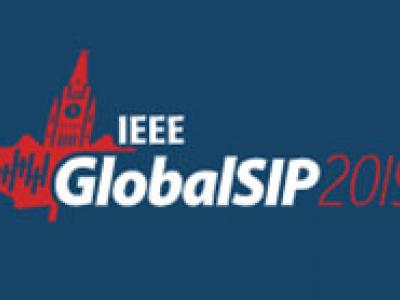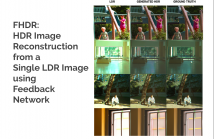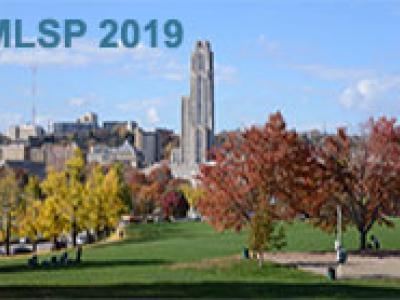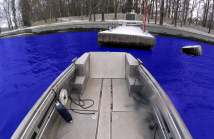
- Read more about LEVERAGING ORDINAL REGRESSION WITH SOFT LABELS FOR 3D HEAD POSE ESTIMATION FROM POINT SETS
- Log in to post comments
Head pose estimation from depth image is a challenging problem, considering its large pose variations, severer occlusions, and low quality of depth data. In contrast to existing approaches that take 2D depth image as input, we propose a novel deep regression architecture called Head PointNet, which consumes 3D point sets derived from a depth image describing the visible surface of a head. To cope with the non-stationary property of pose variation process, the network is facilitated with an ordinal regression module that incorporates metric penalties into ground truth label representation.
- Categories:
 59 Views
59 Views
- Read more about Scene Text Aware Image Retargeting
- Log in to post comments
Extensive use of text labels and symbols available in the digital media for interpretation and communication of information has gained a lot of attention in the era of digital media. Access of the images with scene text in it through different display devices tend to deform the scene text region while resizing for better viewing experience. We propose an image retargeting operator, which is aware of the scene text present in the image. We perform the normal seam carving depending on the content of the image for the non-text region.
- Categories:
 118 Views
118 Views
- Read more about Super-Resolution for Imagery Enhancement Using Variational Quantum Eigensolver
- Log in to post comments
Super-Resolution (SR) is a technique that has been exhaustively exploited and incorporates strategic aspects to image processing. As quantum computers gradually evolve and provide unconditional proof of computational advantage at solving intractable problems over their classical counterparts, quantum computing emerges with the compelling prospect to offer exponential speedup to process computationally expensive operations, such as the ones verified in SR imaging.
- Categories:
 134 Views
134 Views
- Read more about Using Multimodal Data for Automated Fidelity Evaluation in Pivotal Response Treatment Videos
- Log in to post comments
Research has shown that caregivers implementing
pivotal response treatment (PRT) with their child with autism
spectrum disorder (ASD) helps the child develop social and
communication skills. Evaluation of caregiver fidelity to PRT in
training programs and research studies relies on the evaluation
of video probes depicting the caregiver interacting with his
or her child. These video probes are reviewed by behavior
analysts and are dependent on manual processing to extract
data metrics. Using multimodal data processing techniques and
- Categories:
 31 Views
31 Views
- Read more about FHDR: HDR Image Reconstruction from a Single LDR Image using Feedback Network
- Log in to post comments
High dynamic range (HDR) image generation from a single exposure low dynamic range (LDR) image has been made possible due to the recent advances in Deep Learning. Various feed-forward Convolutional Neural Networks (CNNs) have been proposed for learning LDR to HDR representations. To better utilize the power of CNNs, we exploit the idea of feedback, where the initial low level features are guided by the high level features using a hidden state of a Recurrent Neural Network.
- Categories:
 384 Views
384 Views
Alpha matting is an important topic in areas of computer vision. It has various applications, such as virtual reality, digital image and video editing, and image synthesis. Conventional approaches for alpha matting do not perform well when they encounter complicated background or when foreground and background color distributions overlap. It is also difficult to extract alpha matte accurately when the foreground objects are semi-transparent or hairy.
- Categories:
 46 Views
46 Views
- Read more about Compressive Super-Pixel LiDAR for High-Framerate 3D Depth Imaging
- Log in to post comments
We propose a new sampling and reconstruction framework for full frame depth imaging using synchronised, programmable laser diode and photon detector arrays. By adopting a measurement scheme that probes the environment with sparse, pseudo-random patterns, our method enables eyesafe LiDAR operation, while guaranteeing fast reconstruction of
- Categories:
 206 Views
206 Views
- Categories:
 22 Views
22 Views
- Read more about INCREMENTAL LABEL PROPAGATION ON FACIAL IMAGES
- Log in to post comments
The increasing computational complexity of label propagation-based facial image annotation when applied on multimedia data whose cardinality increases over the time (e.g., when analyzing video or movie content on-line), can be reduced by using an incremental approach. In this paper, a method for incremental label propagation on facial images is described. The similarity matrix is incrementally constructed by employing the kd-tree nearest neighbor algorithm.
- Categories:
 56 Views
56 Views
- Read more about High Resolution Water Segmentation for Autonomous Unmanned Surface Vehicles: A Novel Dataset and Evaluation
- Log in to post comments
Even though Unmanned Surface Vehicles (USVs) are increasingly used to perform various laborious and expensive off-shore tasks, they still require an extensive dedicated crew supporting and ensuring the safety of their operations. The recent developments in computer vision and robotics further fueled the interest on developing \textit{autonomous} USVs that will overcome the aforementioned limitations, unleashing their full potential. One of the most vital and fundamental tasks in order to automate and ensure the safety of USV operations is to perform water segmentation.
- Categories:
 89 Views
89 Views